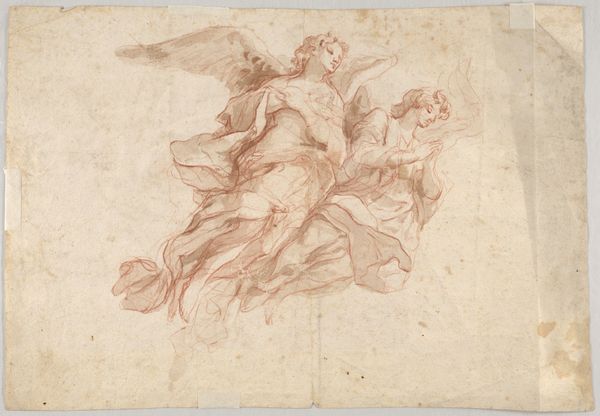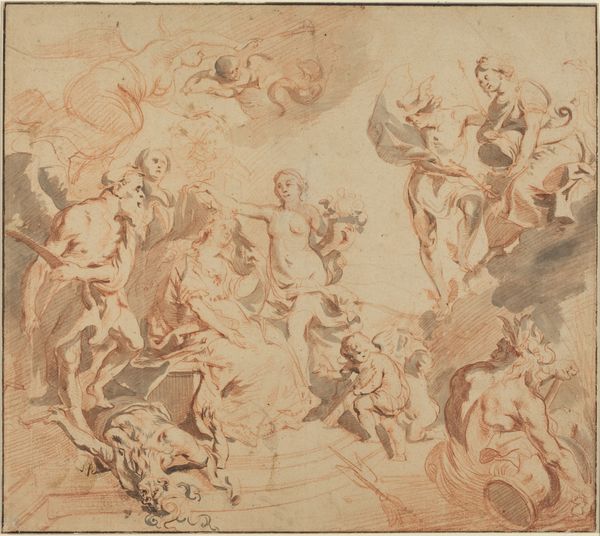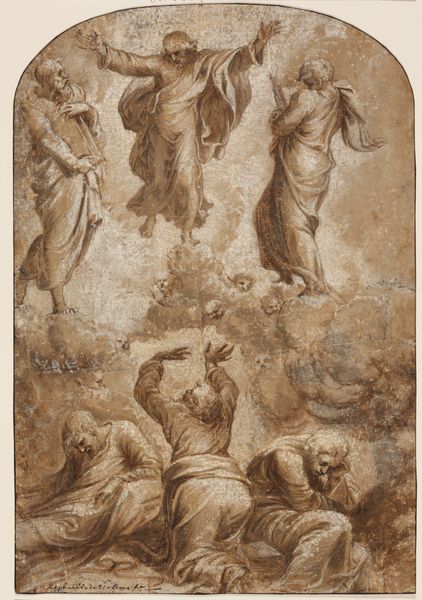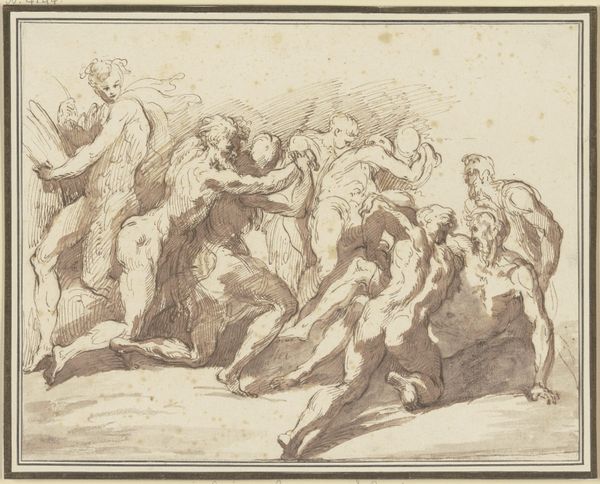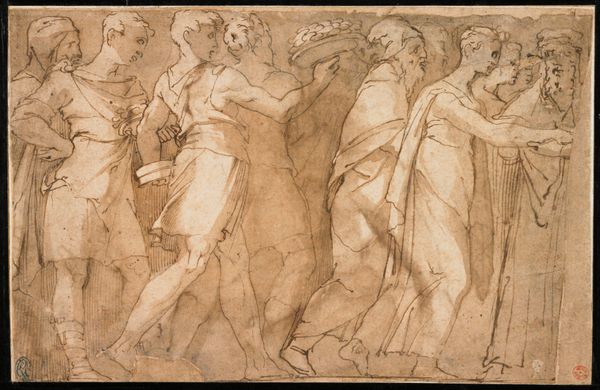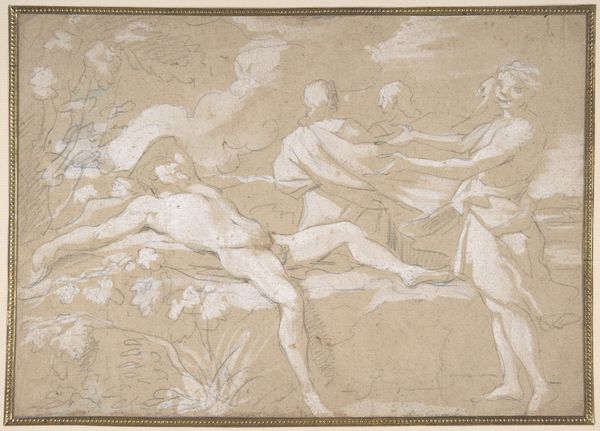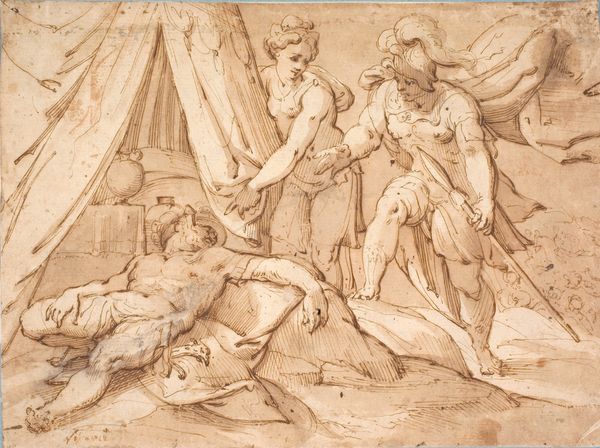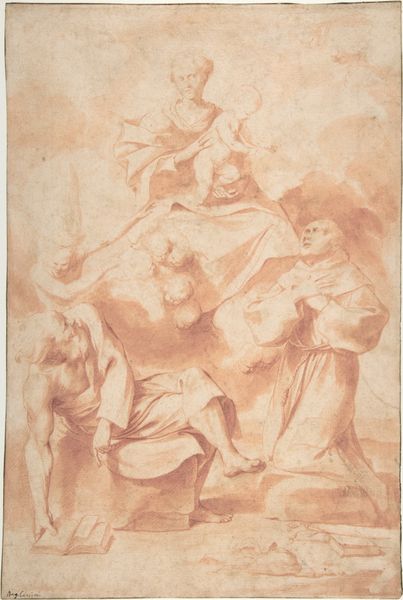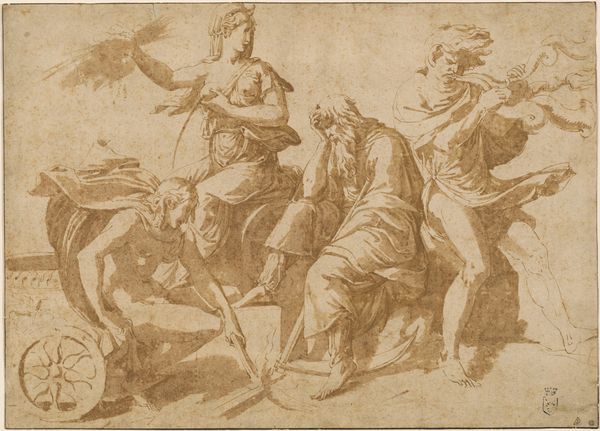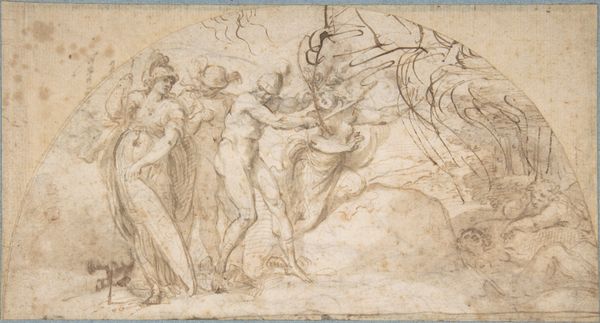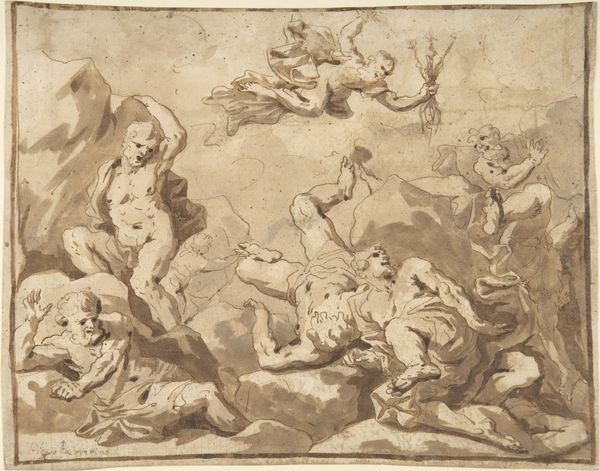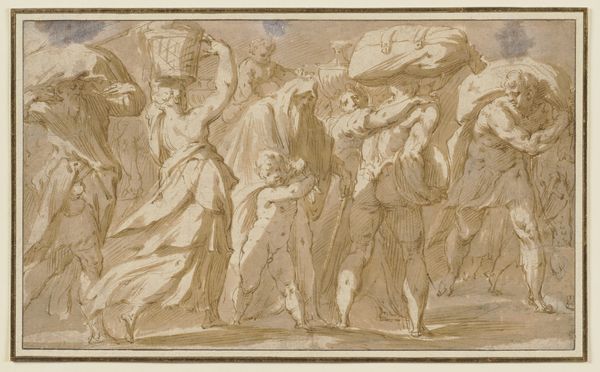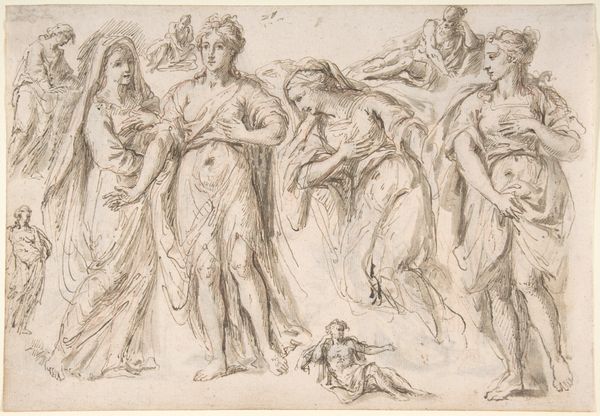
drawing
#
drawing
#
baroque
#
figuration
#
history-painting
Dimensions: sheet: 28.5 x 38.6 cm (11 1/4 x 15 3/16 in.)
Copyright: National Gallery of Art: CC0 1.0
Editor: We’re looking at Cosmas Damian Asam’s "The Ascension of Christ," a drawing from 1720. The dynamic figures sketched in sanguine hues create an upward surge; the composition is fascinating but feels incomplete. What do you see in this piece beyond the surface-level representation? Curator: Notice first how Asam orchestrates movement, not through explicit narrative details, but through the calculated arrangement of lines and forms. The figures, primarily defined by contours and minimal shading, seem almost weightless. Observe the directionality implied by the figures’ gestures, all ascending, creating a visual echo of the titular theme. Editor: It’s interesting you focus on line and form. It makes the composition feel almost abstract despite being a clear religious scene. But how does the unfinished aspect affect the work? Curator: Precisely! The unfinished quality is crucial. The lack of detailed rendering shifts our focus to the foundational structure. This foregrounds Asam’s artistic process. Notice too, how the limited tonal range compels us to examine the subtle gradations that give the figures volume and presence. Can you see how that pushes it beyond just subject matter? Editor: I think so. The process, the form, it becomes more significant than what the scene represents. It makes me wonder what Asam thought was essential to complete versus leave bare. Curator: Precisely. The absences become as important as the presences in understanding his artistic intention. This offers an intriguing case for considering the interplay of intentionality and accident within artistic creation. Editor: I never considered appreciating an artwork based purely on form before, but looking at Asam's drawing in this way has made me appreciate a whole new layer of the creative process. Curator: Indeed. It reminds us that meaning resides not just in the depicted scene, but also within the language of art itself, its intrinsic structure, composition, and materiality.
Comments
No comments
Be the first to comment and join the conversation on the ultimate creative platform.

